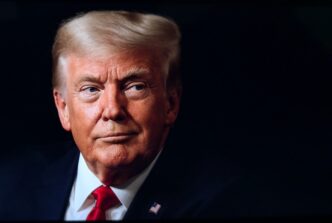President Donald Trump announced on Sunday that the United States and the European Union have reached a significant trade agreement, a development aimed at de-escalating economic tensions that flared after his administration imposed a new wave of tariffs in April 2025. The deal, which European Commission President Ursula von der Leyen acknowledged required “heavy lifting,” marks a pivotal moment in the global trade landscape and represents one of the first major foreign policy achievements of President Trump’s second, non-consecutive term in office.
The ‘Liberation Day’ Tariffs
The path to this agreement began in April 2025, just months after President Trump was sworn in for his second term. At a White House Rose Garden event themed “Make America Wealthy Again,” the administration unveiled a broad set of tariffs targeting goods from key trading partners, including the European Union, China, Mexico, and Canada.
The administration framed the move, part of a day it called “Liberation Day,” as a necessary step to protect American industries and encourage the return of manufacturing jobs to the United States. This action signaled a swift return to the assertive, protectionist trade policies that were a hallmark of President Trump’s first term.
These tariffs were designed to make imported goods more expensive, thereby making American-made products more competitive. The explicit goal was to rebalance what the administration viewed as unfair trade relationships that had disadvantaged U.S. workers for decades.
Averting a Wider Trade War
The imposition of U.S. tariffs prompted immediate concern and condemnation from Brussels, raising the specter of a retaliatory cycle that could harm economies on both sides of the Atlantic. The EU, as a unified trading bloc, is a formidable economic power and was widely expected to respond with its own duties on American products, targeting key U.S. exports.
It was against this backdrop of escalating tensions that intensive negotiations began. The comment from Commission President von der Leyen about “heavy lifting” underscores the difficulty and complexity of the talks. Diplomats worked behind the scenes to find a compromise that would allow both sides to claim a victory while averting a costly, full-blown trade war.
Inside the Agreement: What We Know
While the full text of the agreement has not yet been made public, initial reports and official statements suggest a targeted rollback of tariffs and the establishment of new trade parameters. The deal is expected to provide relief for several key sectors that were at risk.
Potential Sector Impacts
Industries such as European automotive manufacturing and American agriculture were central to the dispute. The agreement likely includes provisions that either remove or reduce U.S. tariffs on European cars and auto parts in exchange for the EU lowering barriers to American agricultural products like soybeans, beef, and dairy.
For American consumers, the deal could prevent or reverse price hikes on a variety of European goods, from luxury items to everyday products. For businesses, it provides a degree of certainty and stability, allowing them to better manage supply chains that had been thrown into disarray by the threat of escalating tariffs.
A Signature Policy in a Historic Presidency
This trade maneuver is a classic example of President Trump’s long-standing approach to international negotiations: using economic leverage, primarily through tariffs, to force trading partners to the table and extract concessions. This strategy was central to his first term and was a key part of his platform during the 2024 campaign.
Having secured a historic victory over Vice President Kamala Harris to become only the second U.S. president to serve non-consecutive terms, President Trump has moved quickly to implement his agenda. This deal with the EU is being presented by the White House as an early validation of his economic strategy and his promise to put “America First.”
The agreement effectively sets the tone for President Trump’s new term, reaffirming his administration’s willingness to disrupt established trade norms to achieve its policy objectives. It serves as a powerful signal to other nations, particularly China, that the White House will continue to employ an aggressive and transactional approach to foreign economic policy.
Ultimately, the successful negotiation of a deal with the European Union represents a significant de-escalation of a potentially damaging economic conflict. It demonstrates the administration’s capacity for both confrontation and compromise, a dynamic that will likely define international relations and global trade for the remainder of President Trump’s term.








